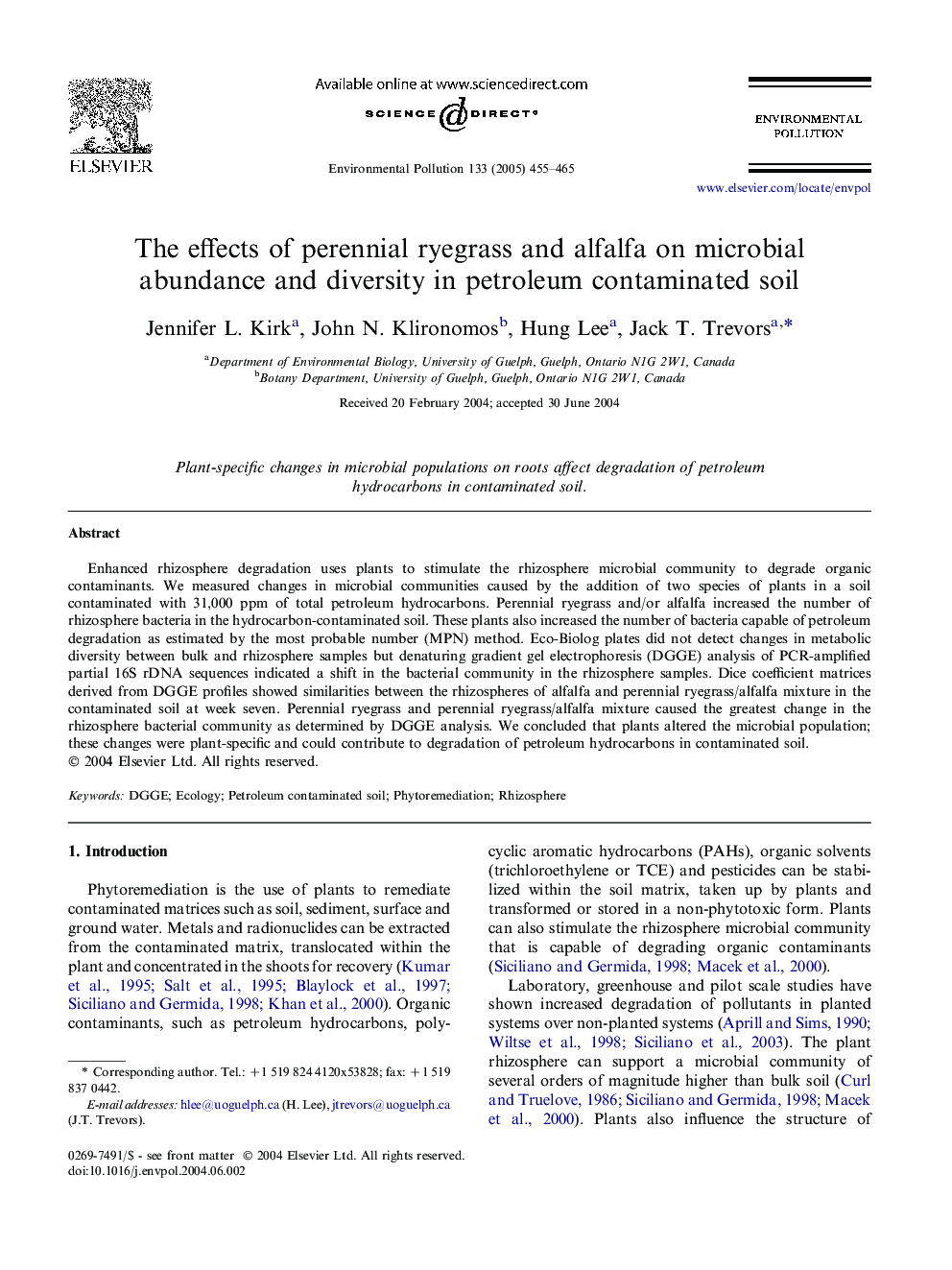| Article ID | Journal | Published Year | Pages | File Type |
|---|---|---|---|---|
| 9456404 | Environmental Pollution | 2005 | 11 Pages |
Abstract
Enhanced rhizosphere degradation uses plants to stimulate the rhizosphere microbial community to degrade organic contaminants. We measured changes in microbial communities caused by the addition of two species of plants in a soil contaminated with 31,000 ppm of total petroleum hydrocarbons. Perennial ryegrass and/or alfalfa increased the number of rhizosphere bacteria in the hydrocarbon-contaminated soil. These plants also increased the number of bacteria capable of petroleum degradation as estimated by the most probable number (MPN) method. Eco-Biolog plates did not detect changes in metabolic diversity between bulk and rhizosphere samples but denaturing gradient gel electrophoresis (DGGE) analysis of PCR-amplified partial 16S rDNA sequences indicated a shift in the bacterial community in the rhizosphere samples. Dice coefficient matrices derived from DGGE profiles showed similarities between the rhizospheres of alfalfa and perennial ryegrass/alfalfa mixture in the contaminated soil at week seven. Perennial ryegrass and perennial ryegrass/alfalfa mixture caused the greatest change in the rhizosphere bacterial community as determined by DGGE analysis. We concluded that plants altered the microbial population; these changes were plant-specific and could contribute to degradation of petroleum hydrocarbons in contaminated soil.
Related Topics
Life Sciences
Environmental Science
Environmental Chemistry
Authors
Jennifer L. Kirk, John N. Klironomos, Hung Lee, Jack T. Trevors,
